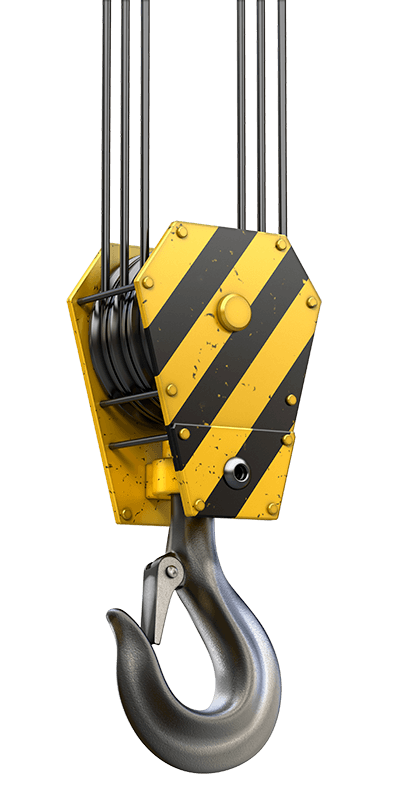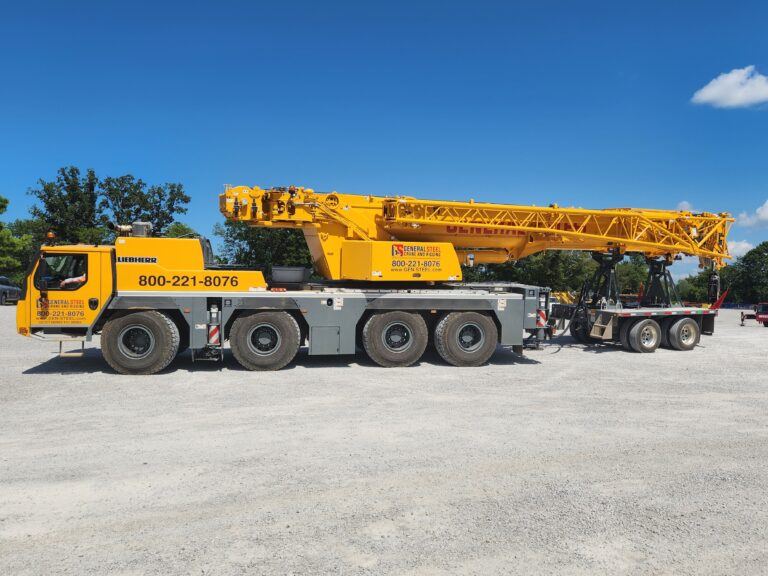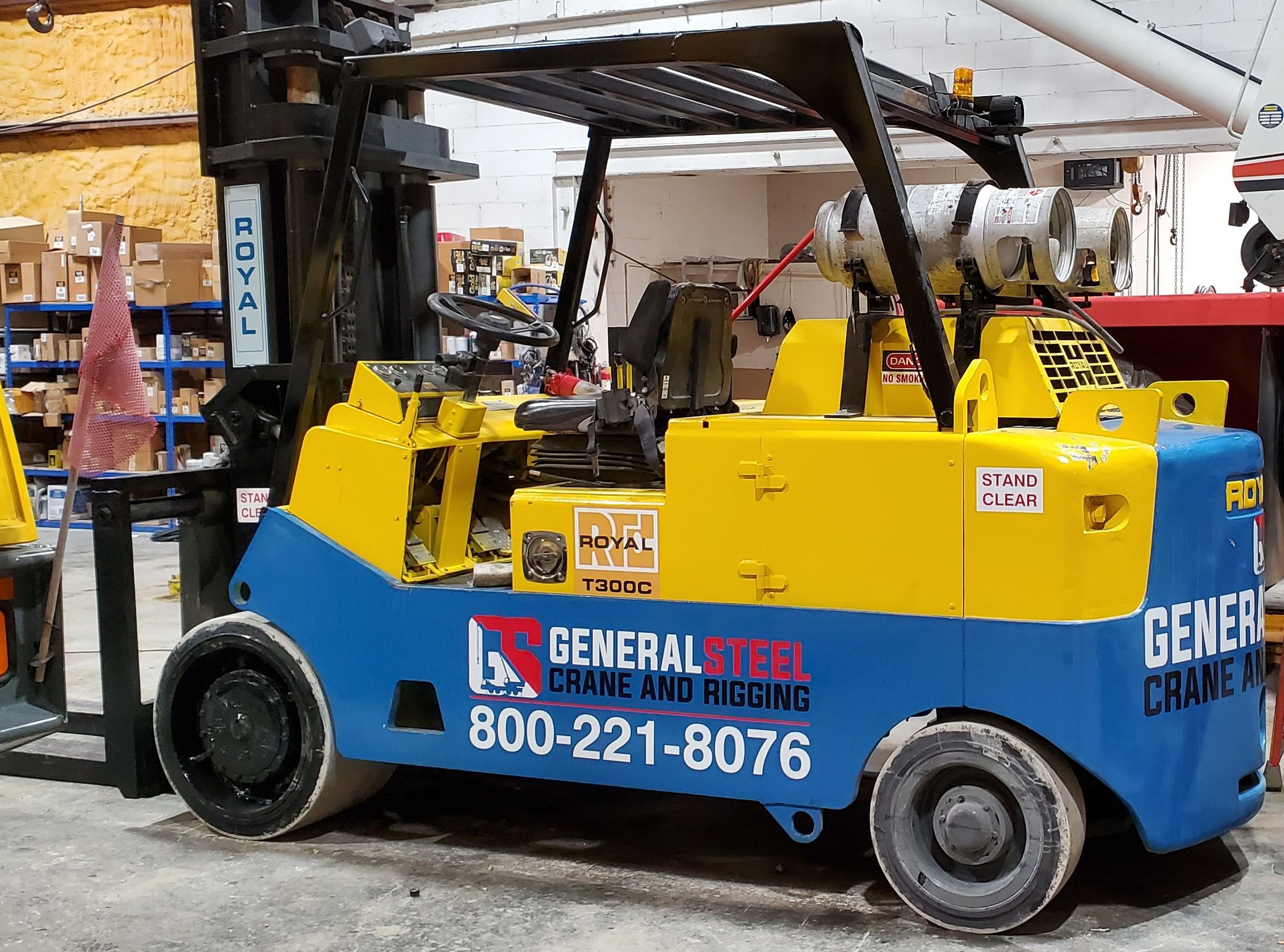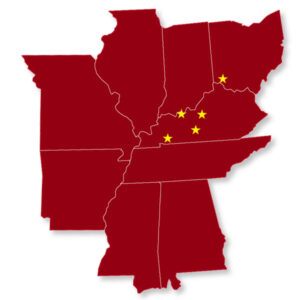Rough Terrain Cranes Vs. All Terrain Cranes
While renting a crane for your next project, you want to be sure you’re getting the right one for your task. There are various cranes, each suited for a specific construction site, with the rough terrain and all-terrain cranes being the best for hard-to-reach and treacherous construction sites. While rough terrain vs. all-terrain cranes may seem similar in capabilities and functions, there are several key differences between them that you should know to help you determine which option suits your project.
At General Steel Crane and Rigging, we have the right cranes for your heavy-lifting needs, thanks to the over 30 cranes available in our category. Among our collection of cranes are rough and all-terrain cranes. We want to help you understand which crane, between rough vs all terrain cranes, suits the nature of your construction. Read on to learn more.
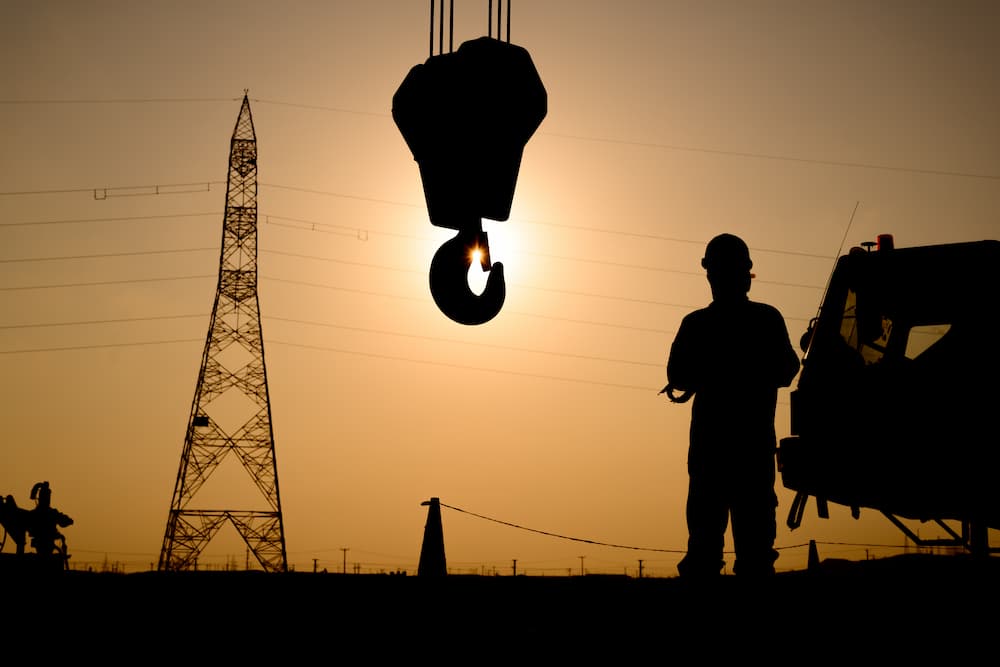
Rough Terrain Cranes
A rough terrain crane is mounted on four big rubber tires with high ground clearance. Another distinguishing feature is its wider-than-normal wheelbase and massive tires to maintain stability. It also features an outrigger and telescopic boom to add stability during lifts. In addition, it has a power steering and an all-wheel drive to improve its handling.
Rough-terrain cranes are lighter than all-terrain since they’re operated and driven from the same cab and have one engine to power the undercarriage and boom.
Most of these features bring several key benefits of rough terrain cranes, which include the following:
- Capability to maneuver and work within uneven ground or unpacked soil due to their lightweight
- More stability due to their wide center of gravity
- Enhanced off-road mobility
Besides having these benefits, it comes with several disadvantages, such as limited load and lifting capabilities and inability to be driven on public roads or highways, meaning that they require transportation to job sites.
All Terrain Cranes
All-terrain crane features closely resemble rough terrain but have several differentiating features. Typically, it has more tires than the rough terrain, often between six and eight, with others having more wheels. This means that some models can have up to nine axles. They also have an all-wheel drive and are larger than the rough terrain cranes. They also feature a wider cabin and operate on two engines, meaning they’re heavier than rough terrain.
With these features, all-terrain cranes offer the following benefits:
- Ability to work in various weather conditions
- Ability to be driven on public roads and off-roads
- Higher speed than the all-terrain, which can reach up to 55 miles per hour depending on the surface
- A highly adjustable boom
Despite these benefits, all-terrain cranes are often heavier, and some models may need to be fitted with an outrigger.
To sum it up, all terrain cranes can move on public roads, while the rough-terrain cranes need transportation to their target construction site. All-terrain cranes can also reach higher heights, while the rough-terrain is limited to a certain height. Finally, the rough-terrain cranes require site preparation due to their off-road configurations.
What Other Types of Cranes Are There?
Besides all-terrain and rough-terrain cranes, other types of cranes out there include the following:
Static Cranes
As the name suggests, this type of crane is erected on a single space and operates along a predetermined path. They are frequently attached to the side of a structure or the roof and are usually anchored to the ground. These cranes stay at a single point during the duration of construction. Types of static cranes include:
- Tower cranes
- Hammerhead cranes
- Luffing jib cranes
- Self-erecting cranes
- Level luffing cranes
Crawler Cranes
A crawler crane is a large, heavy vehicle with metallic treads similar to those used on a tank. These treads allow them to move on soft or marshy grounds where all terrain and rough terrain cranes would likely get stuck.
Vehicle Mounted Cranes or Boom Truck
These are simply trucks fitted with a boom and outfitted with outriggers and counterweights for stabilization. They come in different versions to suit specific tasks.
Crane Rentals for Your Project!
Not sure which crane between rough terrain and all terrain crane suits your needs? Don’t fret! General Steel Crane and Rigging provides top-notch crane rental services in Kentucky, Tennessee, southern Illinois, Ohio, Missouri, and Southern Indiana. If you need help determining which fits your needs, our team of experts will carefully evaluate your needs and help you pick the right one for the job. Contact us today to schedule your consultation.
Image Source: P.V.R.M/Shutterstock
